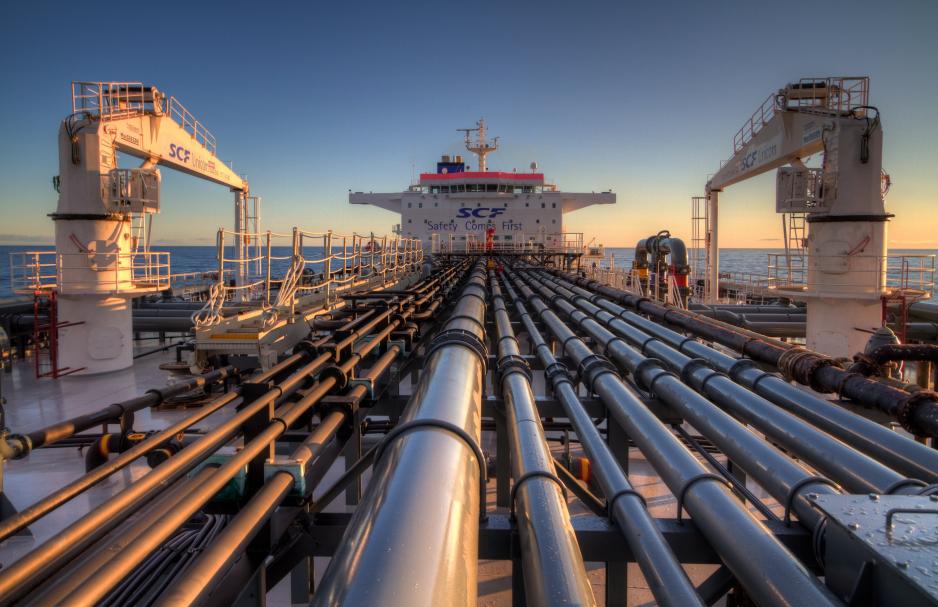IMO adopts new measures to reduce black carbon in Arctic shipping
Environmental activists said that while the voluntary measures are a good first step, they don't go far enough.

The International Maritime Organization last last month adopted a non-binding resolution to reduce black carbon emissions in the Arctic. The efforts are aimed at curtailing harmful particulate matter emanating from ships traveling through the Arctic.
The voluntary measures call on flag states to encourage vessels to switch to lighter, distillate fuels and phase out heavy fuel oils. Lighter fuels burn cleaner and thus emit less black carbon, or soot, coming out of a vessel’s smoke stack.
While reactions from environmental advocates have been positive overall, the weakening of the final resolution was universally criticized.
Sian Prior, lead advisor to the Clean Arctic Alliance, an environmental advocacy group explained:
“While the Clean Arctic Alliance is pleased the IMO finally discussed and accepted the proposal for a black carbon resolution,[…] we are disappointed that in the effort to placate a small but vocal coterie of opposing countries, important substance was lost from the original draft resolution, leaving us with a watered down version. However, what is important is that this resolution now sends a strong message that domestic and regional action to reduce black carbon emissions from ships should proceed.”
Some countries, including Norway, have already set more stringent rules for HFO and black carbon. Last year Norway announced plans to ban the use and carriage of HFO around Svalbard, leapfrogging the IMO’s regulation.
Black carbon vs white ice
Black carbon emissions are especially high for ships using heavy fuel oils, the dirtiest type of fuel still widely used in shipping.
These types of emissions are a short-lived climate forcer and when the dark particulate matter settles onto snow and ice they accelerate melting of light surfaces thus reducing the reflectivity which in turn results in increasing absorption of solar radiation and heat into the ocean and the soil.
The issue of black carbon has become increasingly important as Arctic shipping traffic is growing rapidly. In just a four year period, from 2015 to 2019, black carbon emissions in the Arctic increased by 85 percent.
The new voluntary measures call on flag states to encourage vessels to switch to lighter, distillate fuels and phase out heavy fuel oils. Lighter fuels burn more cleanly and thus emit less black carbon, or soot.
While distillate fuels are more expensive than residual, heavy fuel oils, ships generally do not require any retrofitting to burn them and could, at least in theory, start using those cleaner fuels immediately.
Ships that switch from HFO to distillate fuels reduce their black carbon emissions by almost 50 percent on average, with a decrease of up to 80 percent possible.
Unlike greenhouse gases such as CO2 or methane, which can stay in the atmosphere for a decade or even centuries, the impact of a reduction of black carbon can be measured much sooner.
Weaker language
The IMO proposal was brought forth by Canada in partnership with several European nations, including Norway, Germany, France, and the U.K., as well as the United States in the Marine Environment Protection Committee last week and received support from more than 30 delegations.
Support by several EU member states is noteworthy. In a recent EU Commission report on the Arctic the bloc concludes that it is responsible for 33 percent of black carbon emissions in the Arctic.
As in the past when the IMO considered environmental measures to protect the Arctic from the impact of shipping, such as a general ban on HFO, Russia and China spoke in opposition of the proposal.
Some non-Arctic countries, such as India, Japan, and Saudi Arabia, also opposed the measure.
To achieve a unanimous decision, the stronger language of the original text was watered down before it was subsequently adopted by the full plenary.
The right direction
These new measures to reduce emissions in the Arctic are just the latest step in a long line of efforts to reduce the environmental impact of shipping in the Arctic.
For more than a decade, the IMO and its member states had been inching towards a ban of heavy fuel oil in the Arctic, before agreeing to take steps to ultimately ban this type of fuel from the region last year.
That resolution, however, contained a number of loopholes effectively delaying the ban for most vessels until at least 2029.
While last week’s action does not contain mandatory or comprehensive action with regard to black carbon, it does however represent another building block in the regulatory system.
“[We] are confident that today’s adoption of the resolution on reducing black carbon emissions is the first step towards reducing the impact of the shipping sector on Arctic ecosystems and for Indigenous and local communities,” continued Prior.
The IMO efforts to make global shipping cleaner remain ongoing with the group’s initial strategy to reduce greenhouse gas emissions, setting targets for 2030 and 2050.
Activists have long argued that more stringent rules and accelerated timelines are needed, especially in the Arctic.
“It has long been recognized that what happens in the Arctic, doesn’t stay in the Arctic, and will have repercussions elsewhere through sea level rise and changing weather patterns,” concluded Prior.